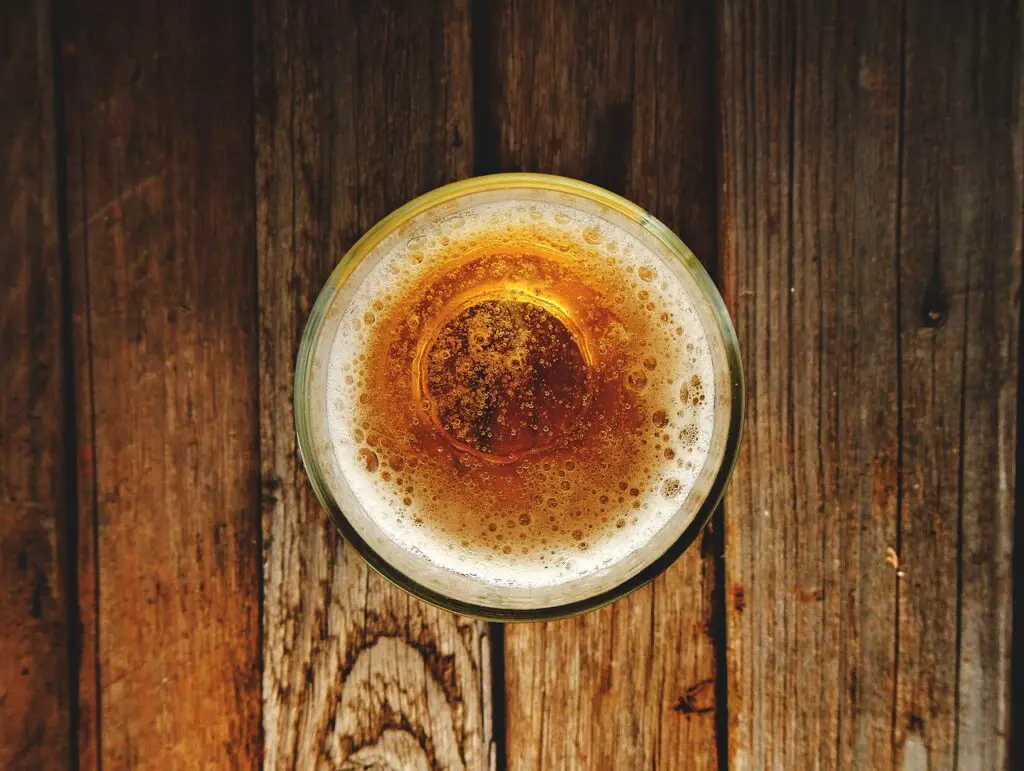For a variety of reasons, you might not want to produce or buy beer that contains yeast. You might not have the proper strain of yeast, after all. Or it might develop significantly worse if the person has a yeast intolerance.
But can beer be produced without yeast? Traditional beer requires the production of yeast. All beers naturally include yeast because beer is a fermented beverage.
But in commercial brews, filtering, pasteurization, or fining can eliminate or kill the yeast that remains in beer after fermentation.
However, when manufacturing a Lambic beer, no specific yeast strains are added to the brewing process.
Lambic beer
The concept of lambic beer is very mysterious to people because they want to know how the alcohol is made in this type of beer because it does not use a specially cultivated brewer’s yeast. The method used to create Lambic beer is called Spontaneous fermentation.
The wort will result in the beer being exposed to the air during the brewing process.
This makes it possible for airborne germs and wild yeast to enter the wort. They can take control since they are unopposed by the brewer’s chosen yeast.
Yeast intolerance
In some ways, lambics are the closest comparison to a beer without yeast, but since they are still prepared using yeast, they fall short of the standard.
Since of the unique fermentation process, several individuals with yeast sensitivity are able to consume beers made with wild yeast as the fermentation method used makes particles break down into more digestible bits easier.
You are merely consuming environmental yeast since no additional yeast is added to the beer.
Although yeast will still be present in lambic beer, it might be at a level that does not cause an allergy or intolerance. Typically, the beer can also be filtered to get rid of the yeast.
Why is yeast used in a beer?
First, a brief explanation for anyone who is ignorant of the importance of yeast in the production of beer. Although fermentation can happen in a variety of ways, yeast acts as a catalyst to produce desired alcohol.
When making beer, yeast breaks down the carbohydrates in a liquid called “wort” to create ethanol and carbon dioxide.
Other forms of fermentation frequently produce substances that are unsuitable for beer. Therefore, the use of yeast is the only way for beer to contain alcohol.
Alcohol without yeast
Alcohol can be produced without yeast, but you likely won’t want to consume it.
Similar to yeast, some bacteria species, notably Zymomonas mobilis, can absorb carbohydrates and make alcohol. The major problem in this situation is that these bacteria would also produce odd unlikeable flavors,
Another issue is that, in contrast to many yeast strains, the bacteria that can generate alcohol are unable to do so using the sugar maltose. One of the most prevalent sugars found in the wort needed to produce various types of alcohol is maltose.
Hence, the majority of commercial alcohol is produced using yeast, although this does not necessarily imply that the finished product contains yeast. The majority of beers are filtered afterward.
Taste of Lambic beer
The Lambic has a wine-like flavor that is dry and has an aftertaste that is sour, much like cider. It is combined with fruity syrups to enhance its flavor and create various beers according to their look and aroma.
For instance, raspberry syrup is used to make framboise; instead of sweetening the beverage, one can try “faro,” while black cherries make kriek out of it.
Lambic Gueuzez
Finally, you might also want to look at Lambic Gueuze. It can be made by combining two older lambics that have matured for at least a year.
The beverage is then placed in a bottle and prepared for the second fermentation using the fermentable sugars from the freshest aged beer.
Unlike other beers that are stored vertically, the gueuze’s brewers maintain its preservation in a horizontal position.
Additionally, it may surprise you to learn that second fermentation helps increase the amount of carbon dioxide, which increases the likelihood that the consumer won’t be able to resist it.
Which beer has the lowest yeast in it?
Based on the brewing techniques employed, many beers only include a very small amount of live yeast.
The least yeast is usually found in beers that are pasteurized, filtered, or brewed with wild yeast. Less yeast is still present in filtered beers such as light lagers, Pilsners, and even hard seltzers.
Is pasteurized beer still yeasty?
Beer is pasteurized to extend its shelf life and avoid spoiled beer.
Beer must be heated to 140°F for fifteen minutes during the pasteurization process to make certain the absence of live germs.
After fermentation is finished, any living yeast left in the beer is destroyed by pasteurization. This does not imply that there is no yeast present, though.
It is almost impossible to filter out every last trace of neutralized yeast without compromising flavor. Although some yeast is still there, it is not active.
Beer Filtration
Consider of beer filtration like filtering sand on a beach—straining, gathering, and finally disposing of remaining solid objects from the liquid. The filter’s size can be altered to capture more or less.
Filtering not only makes the beer appear cleaner, but it can also get rid of impurities that might make it spoil more quickly. That also covers yeast.
